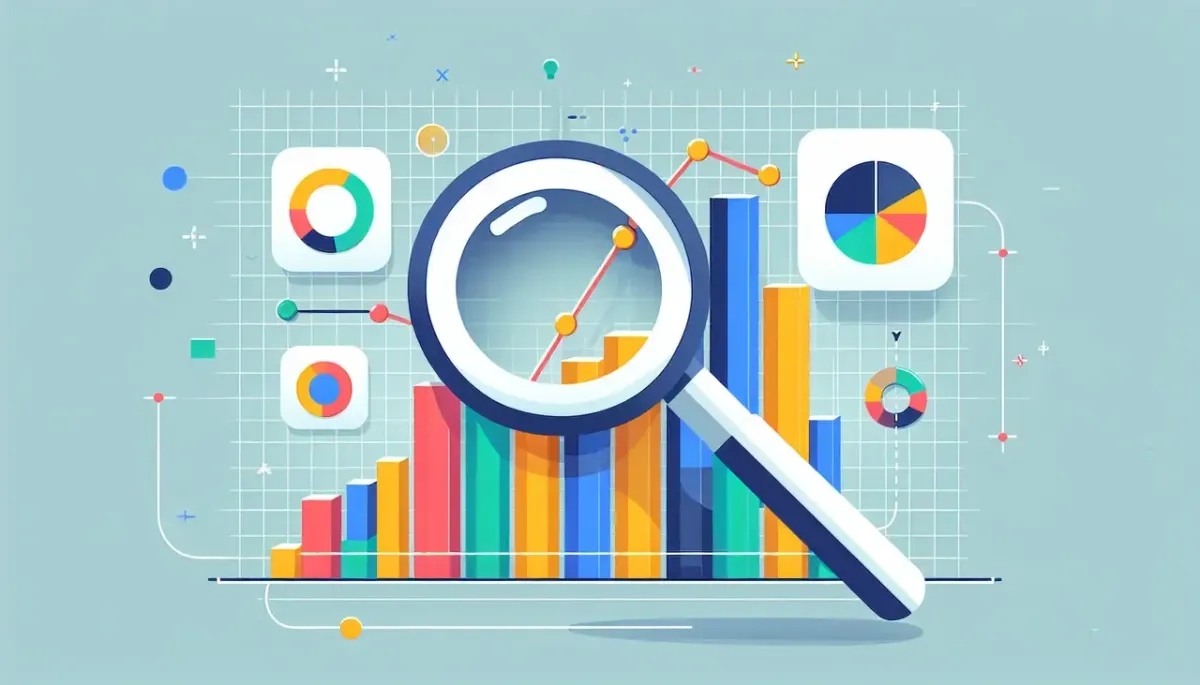COACH'S BLOGS

Understanding the Basics of Business Analytics for Small Businesses
A simple guide for small businesses to use business analytics to make data-driven decisions.What is
In today's competitive market, small businesses need every advantage they can get. Business analytics can provide insights that drive smarter decisions, but many small business owners may find it daunting. This guide will break down the basics of business analytics in a simple and friendly way, helping small business owners understand how to harness this powerful tool.
What Is Business Analytics?
Business analytics involves the use of data, statistical analysis, and predictive modeling to gain insights and make informed business decisions. It helps in understanding past performance and predicting future trends. Simply put, it's like having a crystal ball that enables businesses to make better decisions based on solid data rather than just gut feelings.
Imagine your business is generating all sorts of data every day - from sales figures to customer feedback. Business analytics takes this raw data and turns it into something meaningful. By evaluating this information, you can uncover crucial patterns and trends. This ability to analyze past data allows you to learn what worked, what didn't, and how to optimize future strategies.
Initially, the term 'business analytics' might seem technical, but at its core, it's about making your data work for you. It's about converting numbers into actionable insights that answer critical business questions. This could range from determining the most popular products in your inventory to understanding customer behavior and preferences.
The Importance of Business Analytics for Small Businesses
For small businesses, every decision can have a significant impact. Business analytics provides the necessary insights to make more informed decisions, leading to better outcomes and a competitive edge in the market. By leveraging analytics, small businesses can optimize their operations, enhance customer experience, and improve overall profitability.
One of the primary benefits of business analytics is its ability to identify inefficiencies and areas for improvement within your operations. For example, by analyzing sales data, you might discover that certain products are underperforming compared to others. Armed with this information, you can make informed decisions on whether to adjust pricing, improve marketing strategies, or discontinue the product altogether.
Moreover, business analytics can help you tailor your marketing efforts to better target your audience. By understanding customer preferences and behaviors, you can create personalized marketing campaigns that resonate with your audience, resulting in higher engagement and conversion rates. This level of insight allows small businesses to compete with larger enterprises on a more even playing field.
Business analytics also enhances the customer experience. By analyzing customer feedback and behavior, you can identify pain points and areas where your business can improve. This might involve refining your product offerings, improving customer service, or streamlining the purchasing process. Ultimately, a better customer experience leads to increased customer satisfaction and loyalty, driving repeat business and referrals.
Key Components of Business Analytics
Business analytics consists of several key components, including data collection, data processing, statistical analysis, and data visualization. Each of these components plays a vital role in transforming raw data into actionable insights. Let’s take a closer look at each of them.
Data collection is the first and perhaps the most critical step in the business analytics process. This involves gathering relevant data from various sources such as sales transactions, customer feedback, and social media interactions. The quality and accuracy of the data collected will directly impact the effectiveness of your analysis.
Once you have collected the data, the next step is data processing. This involves cleaning and organizing the data to ensure it is accurate and ready for analysis. Data processing might include removing duplicates, filling in missing values, and converting data into a consistent format. A well-structured dataset is essential for effective analysis.
Statistical analysis is where the magic happens. This component involves using various statistical techniques to identify patterns, trends, and relationships within the data. Techniques such as regression analysis, clustering, and hypothesis testing can help you uncover valuable insights that inform your business decisions.
Data visualization is the final component of business analytics. This involves presenting your findings in a visually appealing and easy-to-understand format, such as charts, graphs, and dashboards. Effective data visualization makes it easier for you and your team to interpret the results and take appropriate action.
Tools and Software for Business Analytics
There are many tools available to help small businesses with their analytics needs. Popular options include Excel, Google Analytics, Tableau, and various business intelligence (BI) platforms. These tools can simplify the process of data analysis and visualization.
Excel is a widely used tool due to its accessibility and versatility. It offers various functions and features that allow you to perform basic data analysis and create charts and graphs. For more advanced analytics, Excel can be integrated with other tools and software.
Google Analytics is another powerful tool, especially for businesses that operate online. It provides insights into website traffic, user behavior, and conversion rates. This information can help you optimize your website and online marketing strategies.
Tableau is a popular data visualization tool that allows you to create interactive and dynamic dashboards. It supports integration with various data sources and offers a wide range of visualization options. With Tableau, you can easily share your findings with your team and stakeholders.
In addition to these tools, there are several business intelligence (BI) platforms available, such as Power BI and QlikView. These platforms offer comprehensive analytics solutions, including advanced data modeling, real-time analytics, and collaborative features. BI platforms can help you gain deeper insights into your business and make more informed decisions.
Implementing Business Analytics in Your Small Business
Starting small and focusing on your most critical business questions can help make the implementation of business analytics more manageable. Developing a clear plan, setting achievable goals, and gradually expanding as you become more comfortable with the process will ensure long-term success.
Begin by identifying the key areas of your business where analytics can have the most significant impact. This might include sales performance, customer behavior, or marketing effectiveness. By focusing on these critical areas, you can prioritize your efforts and make the most of your resources.
Next, establish clear and measurable goals for your analytics initiatives. For example, you might aim to increase sales by 10% within the next quarter or improve customer satisfaction ratings by 15%. Having specific goals will help you track your progress and measure the success of your efforts.
It's also essential to involve your team in the process. Encourage collaboration and open communication to ensure that everyone understands the importance of business analytics and how it can benefit the business. Providing training and resources will help your team develop the necessary skills to contribute effectively.
Finally, be patient and persistent. Implementing business analytics is an ongoing process that requires continuous learning and adaptation. As you gain more experience and insights, you'll be better equipped to make data-driven decisions that drive your business forward.
Common Challenges and How to Overcome Them
Small businesses may face challenges such as limited resources and a lack of expertise. To overcome these, consider investing in training, seeking external help when necessary, and taking advantage of free or low-cost tools to get started.
One common challenge is the cost of implementing business analytics solutions. Small businesses often operate on tight budgets, and investing in expensive software or hiring data analysts may not be feasible. Fortunately, there are many affordable or even free tools available, such as Google Analytics and open-source software like R and Python.
Lack of expertise is another hurdle that small businesses may encounter. If your team lacks the necessary skills to perform data analysis, consider investing in training and professional development. There are numerous online courses and certifications available that can help your team build the required expertise.
Data quality is also a critical factor in the success of your analytics efforts. Inaccurate, incomplete, or inconsistent data can lead to misleading insights and poor decision-making. To address this challenge, establish clear data management practices, such as regular data cleaning and validation processes.
Lastly, it’s essential to foster a data-driven culture within your organization. Encourage your team to embrace data and use it as a foundation for decision-making. By promoting a data-driven mindset, you can ensure that business analytics becomes an integral part of your operations and drives sustainable growth.
Unlock the Potential of Your Business with Analytics
Business analytics doesn't have to be intimidating. With a basic understanding and the right tools, small business owners can leverage analytics to make data-driven decisions that propel their business forward. By starting with these foundational concepts, you'll be well on your way to unlocking the full potential of your business through analytics.

